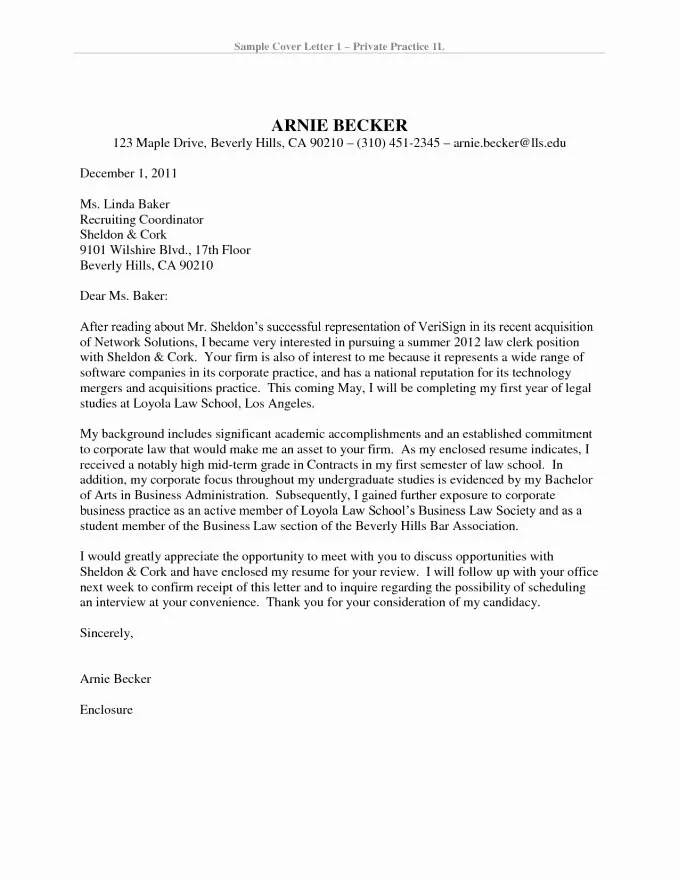What is a Legal Cover Letter?
A legal cover letter is a crucial document that accompanies your resume when applying for legal positions, such as a lawyer, paralegal, or legal assistant. It serves as your introduction to the employer, providing a concise overview of your qualifications, skills, and experience. It allows you to highlight your suitability for the specific role and express your interest in the opportunity. This document is your chance to make a strong first impression and persuade the hiring manager to review your resume and consider you for an interview. A well-crafted legal cover letter demonstrates professionalism, attention to detail, and a clear understanding of the legal field.
Purpose of a Legal Cover Letter
The primary purpose of a legal cover letter is to introduce yourself and your qualifications to a potential employer. It expands upon the information presented in your resume, providing context and depth to your skills and experience. A legal cover letter showcases your writing abilities, communication skills, and your understanding of the legal profession. It allows you to demonstrate your genuine interest in the specific position and the law firm or organization. By effectively conveying your enthusiasm and qualifications, your cover letter increases your chances of getting your resume read and securing an interview. A well-written letter makes you stand out from other applicants.
Key Components of a Legal Cover Letter
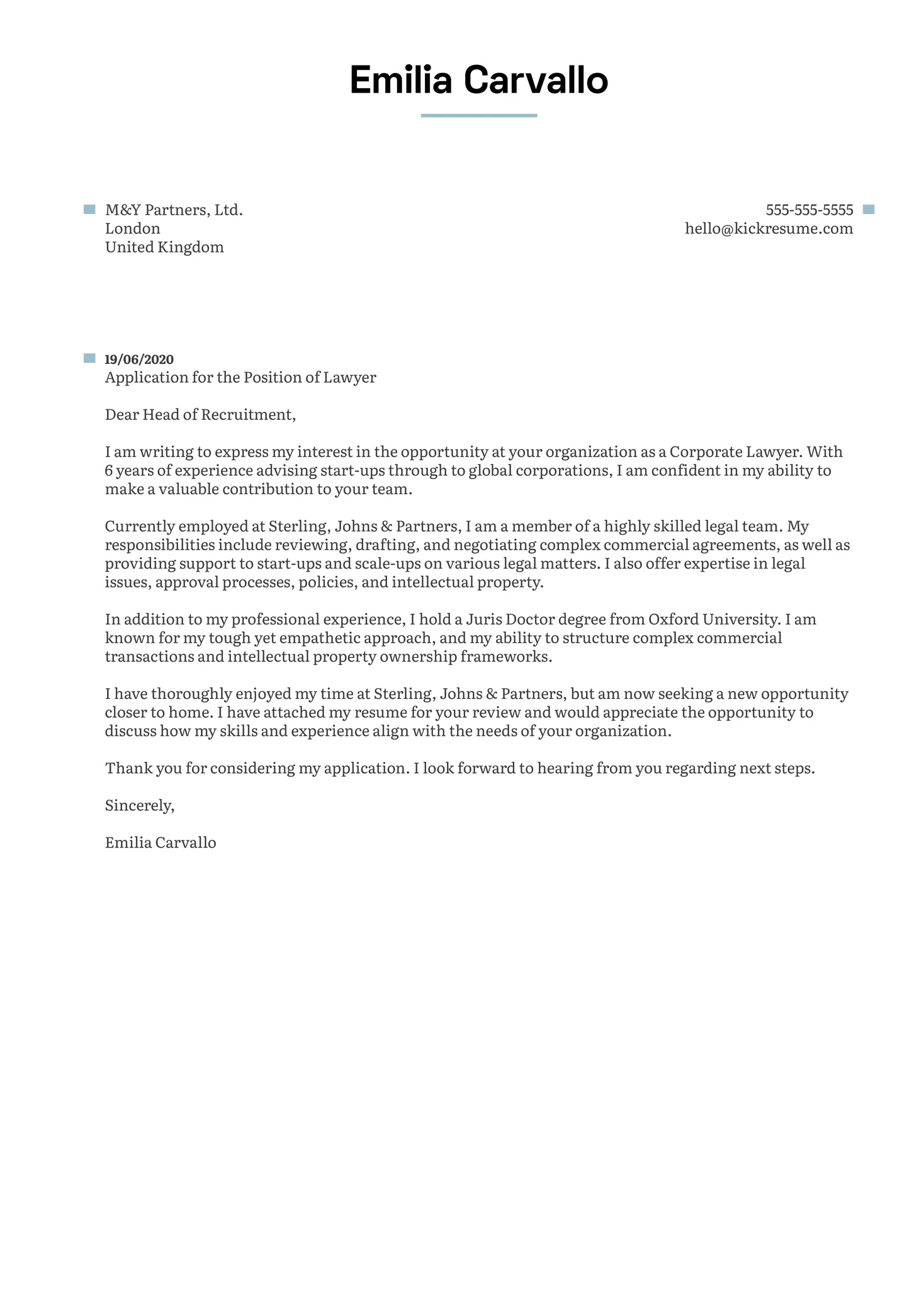
A strong legal cover letter comprises several key components that work together to present you as a qualified candidate. Understanding these elements is essential for crafting a compelling and effective cover letter. Each section has a specific purpose and contributes to the overall impact of your application. Let’s delve into each of these essential parts to guide you in building a successful cover letter that gets results.
Contact Information
Begin your cover letter with your contact information in the top left corner. Include your full name, phone number, email address, and optionally, your LinkedIn profile URL. This allows the recipient to quickly find your contact details. Ensure your contact information is up-to-date and professional. Accuracy in this section is critical to ensure the employer can easily reach you. Double-check all the details for accuracy before submitting your cover letter.
Date and Recipient Information
Below your contact information, on the left side, include the current date. Then, on the right side, address the letter to the hiring manager or the specific person mentioned in the job posting. If you are unsure of the hiring manager’s name, research the law firm’s website or LinkedIn to find it. If you cannot find a specific name, use a professional salutation such as ‘Dear Hiring Manager’. Addressing the letter to a specific person shows that you have taken the initiative to personalize your application.
Salutation
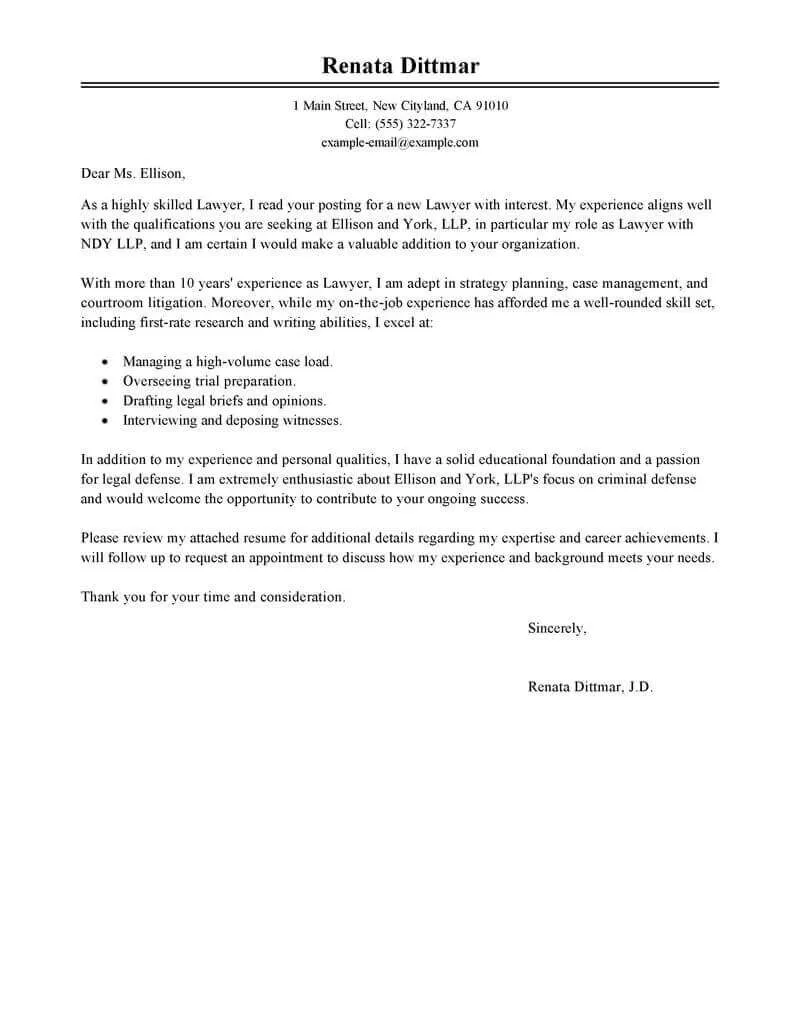
The salutation sets the tone for your letter. Use a formal greeting, such as ‘Dear Mr./Ms./Dr. [Last Name]’ if you know the hiring manager’s name. If you don’t have a specific name, use ‘Dear Hiring Manager’. Avoid casual greetings like ‘Hello’ or ‘Hi.’ Ensure you spell the name correctly to demonstrate attention to detail. A professional salutation sets a professional tone right from the start and shows respect for the recipient.
Body Paragraph 1 Introduction
The introduction is your opportunity to capture the reader’s attention. Start by stating the position you are applying for and where you saw the job posting (e.g., ‘I am writing to express my interest in the Legal Assistant position advertised on [Platform].’). Briefly mention your key qualifications and express your enthusiasm for the role. Keep the introduction concise and engaging to encourage the reader to continue reading. This paragraph should create an immediate positive impression.
State the Position You’re Applying For
Clearly state the specific legal position you are applying for in the first sentence. Refer to the exact job title to avoid any confusion. Also, mention where you found the job posting, such as the company’s website, LinkedIn, or a job board. This shows you are paying attention to detail. Make sure the job title is correct, and provide a brief overview of why you are interested in the position. This establishes the purpose of your letter immediately and provides context for the rest of your application.
Body Paragraph 2 Highlighting Your Skills and Experience
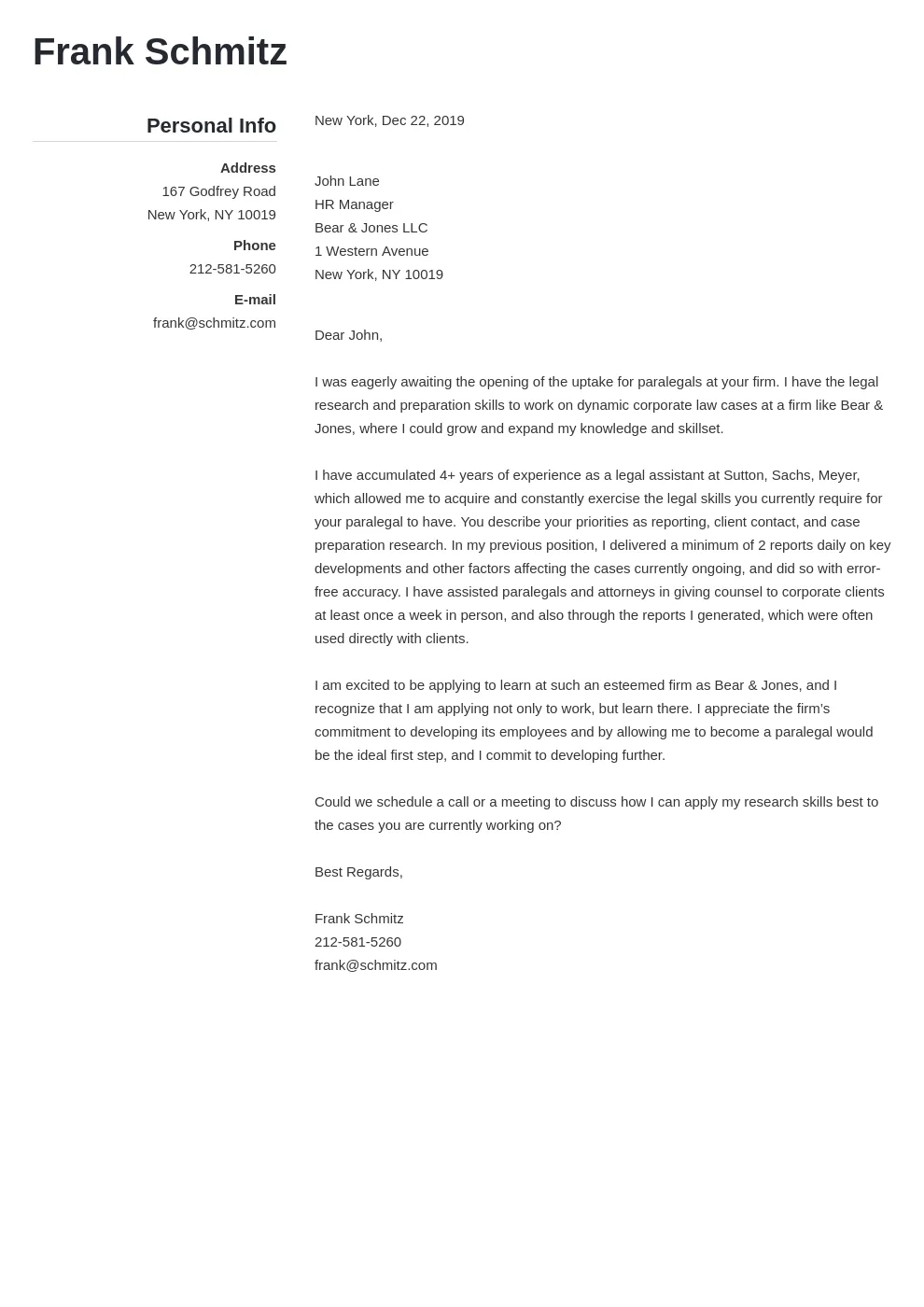
This section should detail your skills and experience relevant to the legal position. Choose key skills and experiences from your resume and expand on them with specific examples. Use the job description as a guide to identify the skills and qualifications the employer is seeking. Tailor your examples to demonstrate your suitability for the role. This is the chance to demonstrate your capabilities and how you have applied them in practice. Quantify your achievements whenever possible to show impact.
Relevant Skills and Qualifications
Highlight the skills and qualifications that align with the job description. Include both hard skills (e.g., legal research, document drafting, case management) and soft skills (e.g., communication, problem-solving, teamwork). Provide specific examples of how you’ve utilized these skills in previous roles or during your education. Demonstrate a clear understanding of the requirements of the position. Be as precise as possible, showcasing what you bring to the table.
Quantifiable Achievements
Whenever possible, quantify your achievements with numbers and data to illustrate your impact. For example, mention the number of cases you have managed, the percentage of documents you reviewed, or the improvements you made to a process. Quantifiable results make your qualifications more compelling and provide concrete evidence of your abilities. By providing clear, measurable achievements, you demonstrate your value to the employer.
Body Paragraph 3 Demonstrating Your Interest
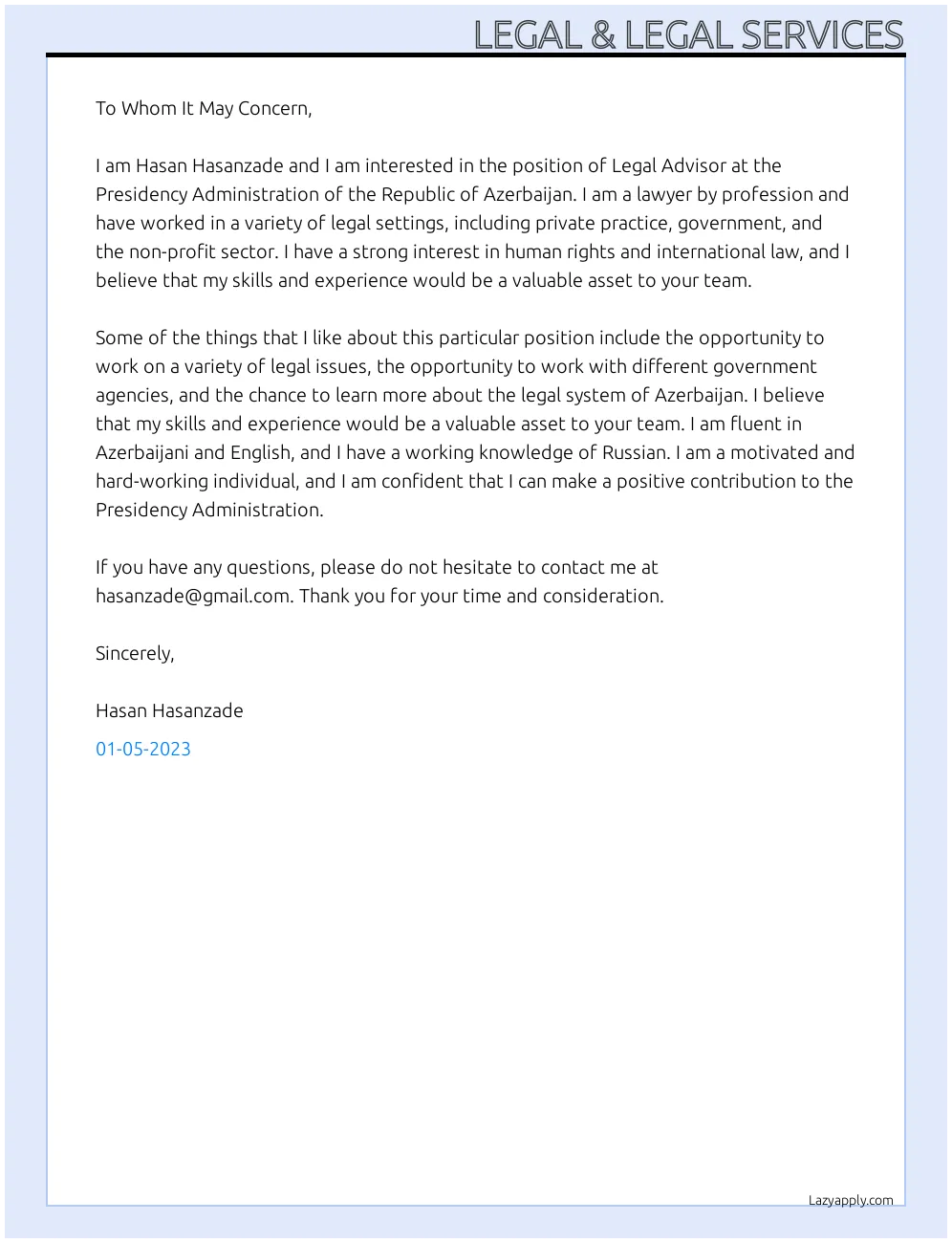
Show your genuine interest in the role and the law firm or organization. Explain why you are interested in the specific position and why you are attracted to the company. Discuss how your values align with the company’s mission and culture. Demonstrating that you have researched the organization and have a genuine desire to work there increases your chances of making a positive impression. Showing genuine interest can go a long way in setting you apart.
Express Your Enthusiasm for the Role
Clearly state your enthusiasm for the specific role. Mention what aspects of the job excite you. Refer back to the job description and explain how your skills and experiences align with the required tasks. Express your eagerness to contribute to the team and the organization’s success. Your enthusiasm is contagious and makes you a more attractive candidate. Make sure your excitement is genuine.
Research the Law Firm
Demonstrate that you have researched the law firm or organization. Mention something specific about the firm’s work, values, or recent achievements that resonate with you. This shows you have taken the time to learn about the company and that you are genuinely interested in joining their team. Understanding the firm’s mission and values indicates a good fit. Use this knowledge to showcase your potential value to the organization.
Body Paragraph 4 Call to Action
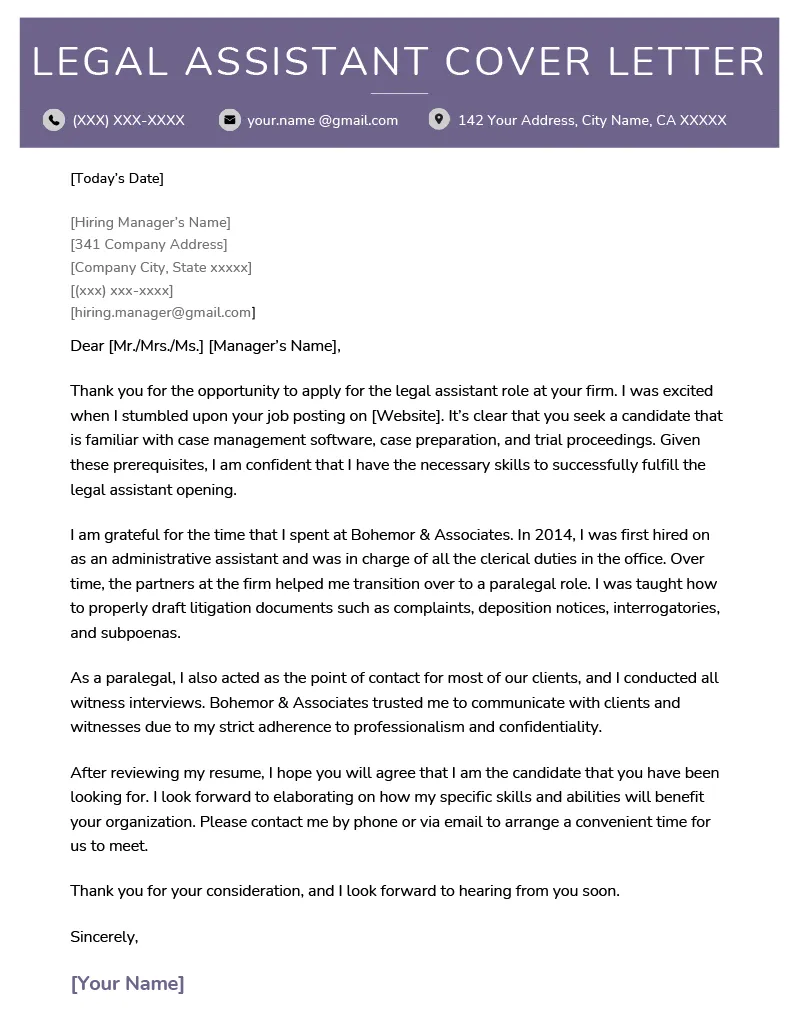
Conclude your cover letter with a call to action. Politely request an interview and express your availability. Thank the reader for their time and consideration. Ensure your closing is professional and leaves a positive impression. This paragraph is your final opportunity to persuade the employer to consider your application further and to make contact. The call to action is a standard and expected part of a cover letter.
Request an Interview
Clearly state your desire for an interview in the final paragraph. Reiterate your interest in the position and your availability for an interview. Be specific about your availability, such as ‘I am available for an interview at your earliest convenience’ or ‘I am available to meet next week’. This demonstrates your proactivity and willingness to proceed with the application process. Providing an interview request shows confidence and helps the employer take the next step.
Thank the Reader
Express your gratitude to the reader for their time and consideration. Use a polite and respectful tone to show your appreciation. This is a standard courtesy and leaves a positive final impression. A sincere thank you reflects your professionalism and consideration for the person reading your letter. End with a professional closing, such as ‘Sincerely’ or ‘Respectfully’.
Closing and Signature
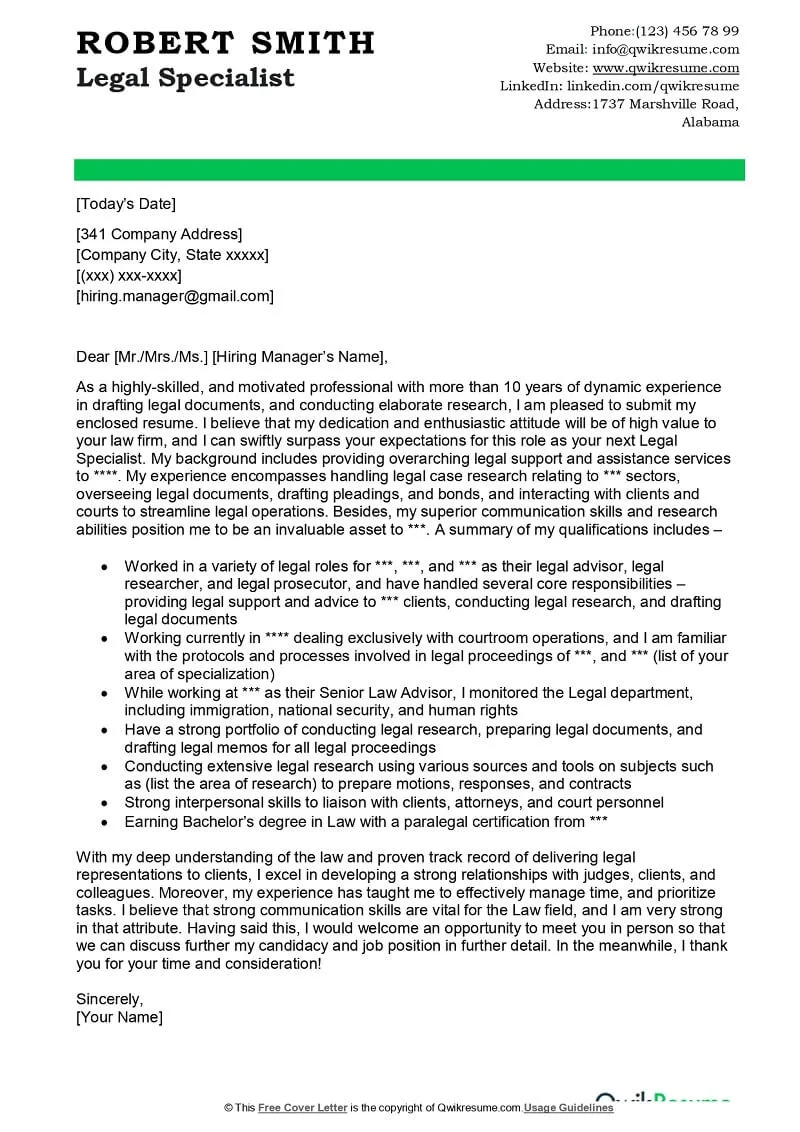
Close your letter professionally. Use a standard closing such as ‘Sincerely,’ ‘Respectfully,’ or ‘Best regards,’ followed by a comma. Leave space for your signature, and type your full name below your signature. If sending a digital cover letter, you can either insert a scanned image of your signature or type your name. Ensure your closing and signature are professional. This final element provides a formal and complete ending to your cover letter.
Formatting and Style
The formatting and style of your legal cover letter are crucial for making a good first impression. A well-formatted letter is easy to read and demonstrates your attention to detail. Use a professional and clear font, consistent margins, and proper spacing to create a polished appearance. Proofread carefully to eliminate any errors. Following these guidelines will significantly enhance the overall impact of your cover letter and make it more appealing to the employer.
Font and Font Size
Choose a professional and easy-to-read font such as Times New Roman, Arial, or Calibri. Use a font size between 10 and 12 points for the body text, and a slightly larger size for headings. Ensure the font is consistent throughout the document. Avoid using overly decorative or unusual fonts, as they can distract the reader. Consistent font choices contribute to the professional appearance of the cover letter, making it clear and concise.
Margins and Spacing
Set consistent margins of 1 inch on all sides of the page. Use single spacing for the body text and double spacing between paragraphs. This spacing ensures the cover letter is easy to read and visually appealing. Proper spacing prevents the text from appearing cluttered or overwhelming. The overall layout should look balanced and organized.
Proofreading and Editing
Proofread your cover letter carefully for any errors in grammar, spelling, and punctuation. Errors can damage your credibility and demonstrate a lack of attention to detail. Read the letter aloud to catch any awkward phrasing or sentences. Ask a friend or family member to review it as well. Ensure that the content is clear, concise, and effectively conveys your qualifications. Proofreading is a critical step to demonstrate that you have taken care with your application.
Common Mistakes to Avoid
Avoiding common mistakes can significantly improve your chances of success with your legal cover letter. These errors can detract from your application and give a negative impression to the hiring manager. Taking steps to prevent these mistakes helps create a polished and professional cover letter that stands out. Let’s look at some of the most frequent errors and learn how to sidestep them.
Typos and Grammatical Errors
Typos and grammatical errors are among the most common mistakes and can seriously damage your credibility. They make your cover letter appear unprofessional and can indicate a lack of attention to detail. Carefully proofread your document multiple times to catch these mistakes. Use spell-check and grammar-check tools. Have someone else review your cover letter before you submit it to identify any errors you may have missed. Correcting these common errors highlights your professionalism and attention to detail.
Generic Content
Avoid using generic content that can be used for any job. Tailor your cover letter to the specific requirements of the position and the law firm. Customize the letter by highlighting relevant skills and experiences from your resume that directly relate to the job description. Demonstrate that you have researched the law firm and understand its values and mission. Writing a personalized cover letter that aligns with the specific opportunity shows your genuine interest.
Lengthy Cover Letters
Keep your cover letter concise and to the point. Hiring managers often review many applications, so it is important to make your points quickly and efficiently. Aim for one page or less. Use clear and straightforward language. Avoid including unnecessary information or lengthy explanations. Highlight your key qualifications and experience. Present your information in a way that is easy to read and understand, making it more likely that your cover letter will be read in its entirety.
Tips for Different Legal Positions
The specifics of a legal cover letter can vary based on the legal position you are applying for. Customizing your cover letter to fit the requirements of the specific role will greatly enhance your chances of success. Certain positions have unique aspects that should be highlighted. Tailoring the cover letter to each position is essential. We’ll look at how to tailor your cover letter to three different legal positions.
Legal Assistant Cover Letter
When writing a cover letter for a legal assistant position, emphasize your organizational and administrative skills. Highlight your experience with legal documents, case management, and client communication. Mention your proficiency with legal software and office management tools. Provide examples of how you have assisted attorneys in previous roles. Showcase your ability to manage deadlines and handle confidential information. Focus on skills that make you a valuable support to a legal team.
Paralegal Cover Letter
For a paralegal position, emphasize your legal research and writing skills, and your experience with legal procedures and court filings. Highlight your familiarity with specific areas of law and your ability to conduct legal research. Mention your experience with document preparation and analysis. Showcase your experience with client communication and managing case files. Detail your knowledge of legal terminology and the skills that qualify you for legal tasks.
Lawyer Cover Letter
A lawyer cover letter should focus on your experience with legal practice, your expertise in specific areas of law, and your achievements in previous roles. Highlight your litigation experience, your knowledge of legal procedures, and your ability to represent clients. Emphasize any successful case outcomes. Discuss your professional skills, such as negotiation, client relations, and court appearances. Showcase your legal experience and your successes. Demonstrate your strong qualifications to perform legal tasks.
Legal Cover Letter Template and Examples
Using a legal cover letter template and studying examples can help you create a compelling and effective cover letter. Templates provide a framework and structure to follow. Examples demonstrate how to present your qualifications and skills effectively. Combining templates and examples ensures a professionally formatted letter. Using these tools can make the writing process easier, quicker, and the final product can be a well-written cover letter. By following these tips and utilizing resources, you can create a legal cover letter that showcases your qualifications and secures you an interview.
